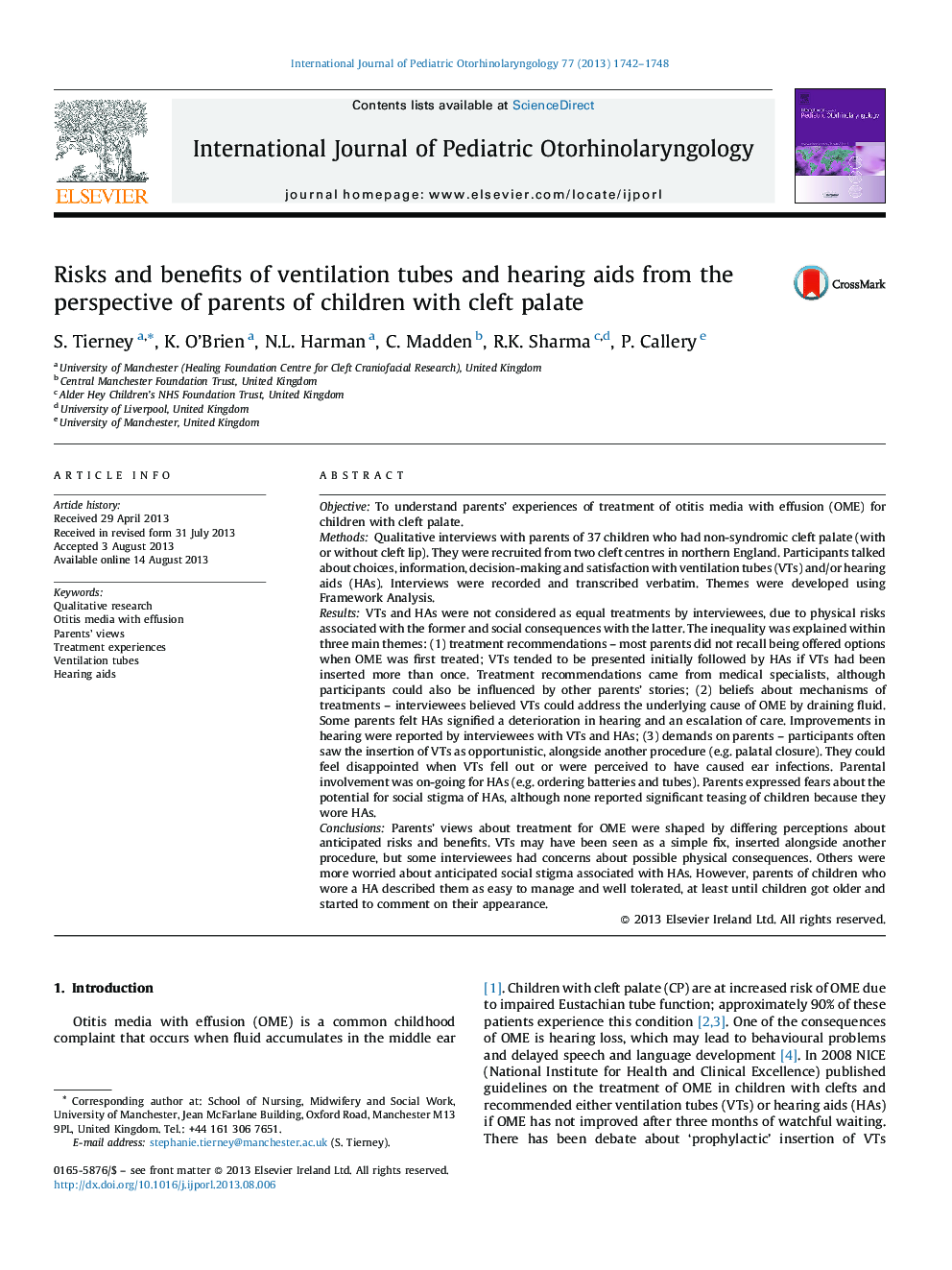| کد مقاله | کد نشریه | سال انتشار | مقاله انگلیسی | نسخه تمام متن |
|---|---|---|---|---|
| 4112890 | 1606015 | 2013 | 7 صفحه PDF | دانلود رایگان |

ObjectiveTo understand parents’ experiences of treatment of otitis media with effusion (OME) for children with cleft palate.MethodsQualitative interviews with parents of 37 children who had non-syndromic cleft palate (with or without cleft lip). They were recruited from two cleft centres in northern England. Participants talked about choices, information, decision-making and satisfaction with ventilation tubes (VTs) and/or hearing aids (HAs). Interviews were recorded and transcribed verbatim. Themes were developed using Framework Analysis.ResultsVTs and HAs were not considered as equal treatments by interviewees, due to physical risks associated with the former and social consequences with the latter. The inequality was explained within three main themes: (1) treatment recommendations – most parents did not recall being offered options when OME was first treated; VTs tended to be presented initially followed by HAs if VTs had been inserted more than once. Treatment recommendations came from medical specialists, although participants could also be influenced by other parents’ stories; (2) beliefs about mechanisms of treatments – interviewees believed VTs could address the underlying cause of OME by draining fluid. Some parents felt HAs signified a deterioration in hearing and an escalation of care. Improvements in hearing were reported by interviewees with VTs and HAs; (3) demands on parents – participants often saw the insertion of VTs as opportunistic, alongside another procedure (e.g. palatal closure). They could feel disappointed when VTs fell out or were perceived to have caused ear infections. Parental involvement was on-going for HAs (e.g. ordering batteries and tubes). Parents expressed fears about the potential for social stigma of HAs, although none reported significant teasing of children because they wore HAs.ConclusionsParents’ views about treatment for OME were shaped by differing perceptions about anticipated risks and benefits. VTs may have been seen as a simple fix, inserted alongside another procedure, but some interviewees had concerns about possible physical consequences. Others were more worried about anticipated social stigma associated with HAs. However, parents of children who wore a HA described them as easy to manage and well tolerated, at least until children got older and started to comment on their appearance.
Journal: International Journal of Pediatric Otorhinolaryngology - Volume 77, Issue 10, October 2013, Pages 1742–1748